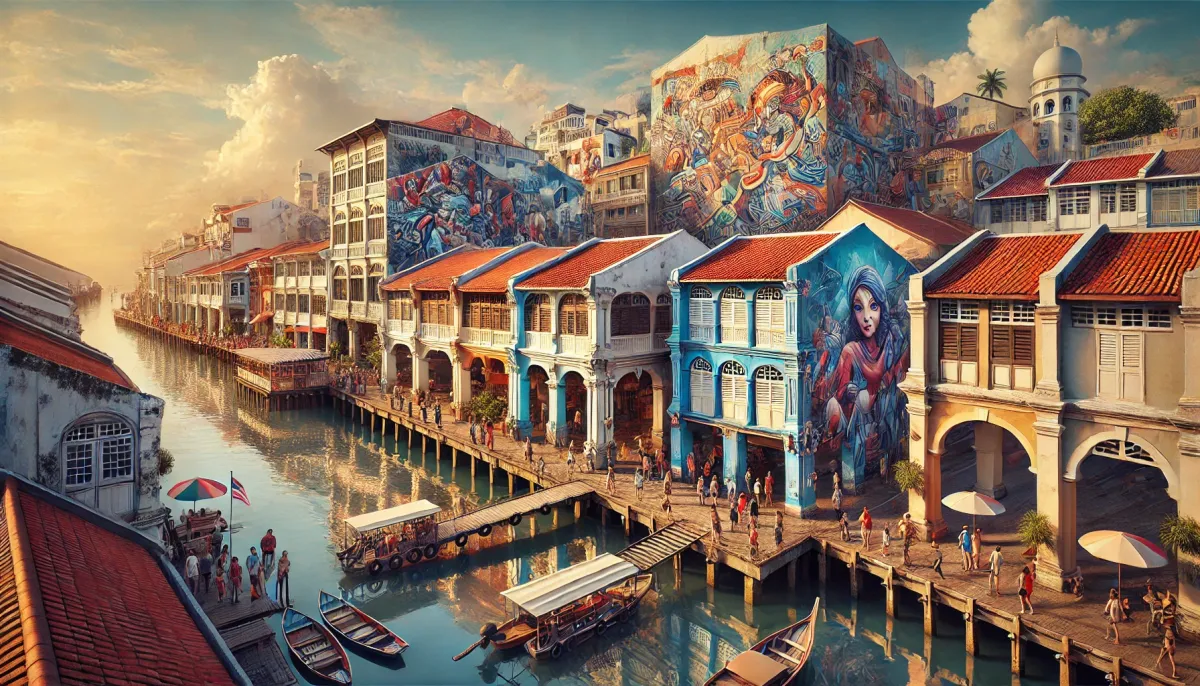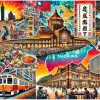Hi everyone, Mark here! I'm an American backpacker with a passion for exploring Asia's vibrant cities. Recently, I had the incredible opportunity to delve into the rich tapestry of Malaysian culture, specifically in the captivating city of Penang's George Town and the charming village of Kampung Agong. Let me share my unforgettable experiences with you.
Kampung Agong: A Glimpse into Traditional Malay Village Life
My journey began in Kampung Agong, a traditional Malay village offering a fascinating glimpse into rural Malaysian life. The most striking feature? The stilt houses, a quintessential element of Malay architecture. I learned that these houses are built on stilts for several practical reasons, primarily to protect against flooding, humidity, and unwanted critters like snakes and rodents. Malaysia's proximity to the equator and its frequent rainfall necessitate this unique design.
The houses themselves are a work of art, primarily constructed from wood and attap leaves ( Nipah fruticans). The Malays often use body parts as metaphors when describing the houses: "head," "body," and "legs" – the stilts being the "legs" of the structure.
Here's a quick summary of the key features of traditional Malay houses:
| Feature | Description |
|---|---|
| Stilts | Elevated structure to protect against flooding, humidity, and pests. |
| Materials | Primarily wood and attap (Nipah) leaves. |
| Entrance | Typically two entrances: front (for men) and rear (for women). |
| Layout | Living area is the central and most important part, often used for religious rituals. |
| Roof | Steep, gabled roof for efficient rainwater runoff and sun protection. |
| Orientation | Traditionally, the main door avoids facing south, according to Malay customs. |
| Surroundings | Often surrounded by fruit trees (coconut, banana, rambutan, durian) and poultry. |
Beyond the architecture, I was captivated by the Malay people's warm hospitality and their unique culinary traditions. Malaysian food is known for its bold flavors, heavy use of spices, and the absence of pork due to religious practices. While the intense flavors were initially a bit of a shock to my American palate, I quickly grew to appreciate the authenticity and cultural significance. I discovered the delicious satay, grilled meat skewers, and learned the importance of washing hands before meals, a crucial aspect of Malay hygiene and etiquette.
George Town: A Living Museum of History and Culture
Next, I ventured to George Town, a UNESCO World Heritage site in Penang. Unlike many tourist destinations, George Town boasts a remarkable absence of overwhelming commercialization, allowing its historical charm to shine through. I spent hours wandering through its streets, marveling at the unique blend of Chinese, Malay, Indian, and European influences.
One of the most captivating aspects of George Town is its clan jetties. These unique waterfront settlements, built on stilts over the sea, tell a compelling story of early Chinese immigrants who, lacking land ownership rights, created their homes on the water. Each jetty is associated with a specific Chinese surname (e.g., Chew Jetty, Khoo Kongsi), reflecting the close-knit community bonds formed amongst those who shared a common heritage.
| Clan Jetty Feature | Description |
|---|---|
| Stilt Construction | Houses built on stilts over the water, offering protection from flooding. |
| Surname Affiliation | Each jetty represents a specific Chinese surname, reflecting kinship ties. |
| Historical Significance | The jetties offer a glimpse into the early Chinese immigrant experience. |
| Lack of Commercialization | Preserves the authentic lifestyle of the residents. |
I was particularly impressed by the lack of commercialization in these areas; it felt like stepping back in time, and I truly appreciated being able to experience the genuine daily lives of the residents. The clan jetties offer a unique insight into the history and culture of the area, illustrating the resilience and community spirit of its inhabitants.
The vibrant street art of George Town is another highlight. From the iconic "姐弟共騎" (Sister and Brother on a Bicycle) mural to the playful "Chasing the Wind" depiction, the artwork breathes life into the city's streets and attracts countless visitors each year. Taking a trishaw ride through the streets offered a leisurely and enjoyable way to absorb the sights and sounds of this historic city.
George Town is a multicultural melting pot, with Malay, Indian, Chinese, and European influences blending seamlessly. The culinary scene is a reflection of this diversity, offering a wide array of flavors and dishes to tantalize the taste buds.
The Temples of George Town: A Reflection of Faith and History
My exploration of George Town extended to its diverse religious landscape, visiting the impressive Thai and Burmese temples. The Wat Chayamangkalaram, housing a massive reclining Buddha, and the Cheong Fatt Tze Mansion, a stunning example of Chinese architecture, provided profound experiences of faith and beauty.
The Thai temple, built in 1845, holds a special place in the history of Penang. Its construction was permitted by Queen Victoria, symbolizing the strong trade and friendly relationships between Thailand and Britain at that time. The presence of this temple, along with the older Burmese temple, dating back to 1803, highlights Penang’s acceptance and integration of different cultures.
The history of George Town is inextricably linked to its people, its diverse faiths, and its architectural wonders. From the clan jetties to the street art and temples, George Town offers a captivating journey through time, a true testament to its status as a UNESCO World Heritage site.
The Significance of George Town's Historical Preservation
The success of George Town as a World Heritage site, while celebrating its rich past, also highlights the challenges of balancing preservation with modern development. Preserving historical buildings and supporting the residents who call it home require careful planning and significant resources. The aging population, the need for economic growth, and the influx of tourism all pose distinct challenges. However, George Town's unique blend of history, culture, and culinary delights continues to draw visitors from around the world, showcasing the beauty of preserving and celebrating cultural heritage.







